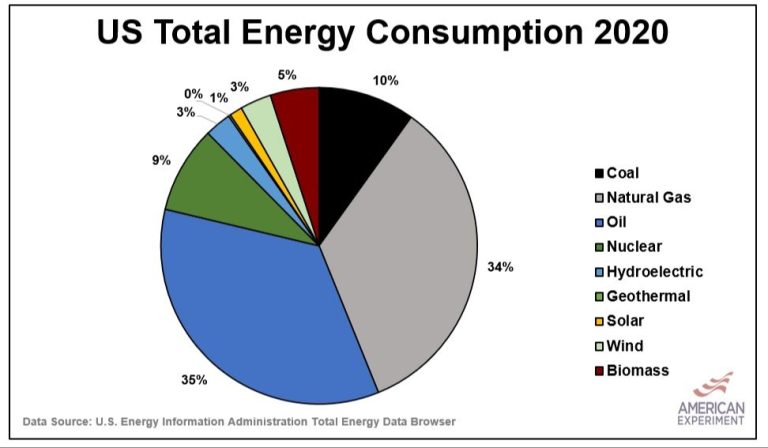How Solar Energy Works?

Solar energy is the radiant energy from the sun that is harnessed using various technologies such as solar heating, solar photovoltaics, solar thermal energy, solar architecture, and artificial photosynthesis. The sun has produced energy for billions of years and solar power provides a clean and sustainable alternative to fossil fuels.
While solar technologies have been used for decades, advancements in the efficiency and decreasing costs of solar panels have led to massive growth in solar energy worldwide. According to the Solar Energy Industries Association (SEIA), the amount of solar energy installed in the U.S. has increased more than 10,000% in the last decade, from 1.2 gigawatts (GW) in 2008 to 122 GW today [1]. Solar currently represents around 3% of U.S. electricity generation, but SEIA projections estimate solar could reach 20% of U.S. electricity generation by 2030 [1].
The future looks bright for solar energy. Costs continue to fall each year, and solar is now cost competitive with conventional energy sources. With supportive policies and technological improvements, solar is expected to continuing seeing massive growth worldwide and play a major role in the global transition to renewable energy.
How Solar Panels Work
Solar panels work through the photovoltaic effect, which is the process of converting sunlight into electricity. Solar cells inside the panels are made up of semiconductor materials like silicon that have a positive and negative layer. When sunlight hits the solar cell, the photons excite the electrons in the negative layer, causing them to break free and flow through an external circuit as electricity.
The key components in a basic solar cell are the semiconductor material, the positive and negative layers, an antireflective coating, and metal conductors. Silicon is one of the most common materials used. The negative layer has an excess of electrons, while the positive layer has “holes” that accept electrons. When sunlight strikes the cell, electrons move from the negative to positive layer, creating current. The metal conductors transfer the current for external use.
In terms of the conversion process, when a photon from sunlight hits the cell, its energy knocks an electron loose in the negative layer. This free electron then migrates to the positive layer and flows through a load and back to the negative layer, generating electricity. The antireflective coating helps maximize light absorption. In this way, sunlight is directly converted to electrical energy through the photovoltaic effect.
Source: https://pickmysolar.com/how-solar-panels-work/
Types of Solar Panels
There are two main types of solar panels: crystalline silicon panels and thin film panels.
Crystalline Silicon Panels
Crystalline silicon panels, also known as photovoltaic (PV) panels, are the most common type of solar panels. They are made from silicon wafers, which are either monocrystalline or polycrystalline in structure.
Monocrystalline silicon solar panels are made from a single crystal of silicon, making them more efficient (typically around 15-20%) but also more expensive. According to Aurora Solar, monocrystalline panels have a distinctive uniform look with cells that are black and rectangular.
Polycrystalline silicon solar panels are made from fragments of silicon crystals melted together, which reduces costs but also slightly lowers efficiency (typically 13-16%). Polycrystalline panels have a speckled blue color and cells that are rectangular or pseudo-square.
Thin Film Panels
Thin film solar panels are made by depositing one or more thin layers of photovoltaic material onto a substrate like glass, plastic or metal. Thin film is cheaper to manufacture than crystalline silicon but less efficient (typically 7-13%).
According to Energysage, common thin film materials include cadmium telluride (CdTe), amorphous silicon (a-Si), and copper indium gallium selenide (CIGS). Thin film panels have a flexible appearance and can be integrated into building materials.
In terms of efficiency versus cost, monocrystalline panels provide the highest efficiency but at a higher price point. Polycrystalline panels offer a good middle-ground, while thin film panels are least expensive but also least efficient.
Sources:
https://aurorasolar.com/blog/solar-panel-types-guide/
https://www.energysage.com/solar/types-of-solar-panels/
Solar Panel Installation
Installing solar panels requires careful planning and preparation. There are a few key decisions to make on how to mount and orient the panels.
For residential systems, solar panels are typically mounted on the roof. This allows them to blend seamlessly into the home’s architecture. Rooftop solar must be mounted on a south-facing section of roof that gets full sun exposure throughout the day (DIY Solar Panel Installation).
Larger solar farms use ground-mounted systems that can tilt and rotate the panels to maximize sunlight capture. Fixed tilt mounts are stationary, while single or dual axis trackers move throughout the day to follow the sun (Solar Panel Installation Guide).
Proper wiring is critical for connecting the solar panels to the inverter and electrical system. Cables, conduits, and disconnect switches are wired to code and clearly labeled. Grid-tied solar systems synchronize to the existing electrical grid through an inverter that converts DC from the panels to usable AC power.
Residential Solar Use
A typical residential solar system is made up of solar panels, an inverter, racking and mounting hardware, wiring, and a meter. Solar panels, usually installed on the roof, absorb sunlight and convert it into electricity. The inverter converts the DC power from the panels into AC power that can be used in the home or fed back to the grid. The mounting hardware securely attaches the panels, while the wiring connects the components. The meter tracks energy production and consumption.
Some of the benefits of residential solar include lower energy bills, energy independence from the utility, and a smaller carbon footprint. However, the upfront costs range from $15,000-$25,000 on average. Homeowners can offset these costs through incentives like tax credits and net metering, which credits excess energy fed back to the grid. Net metering allows consumers to reduce costs over the system lifetime, which is estimated at 20-25 years.
Utility-Scale Solar
Utility-scale solar refers to large solar photovoltaic (PV) power stations and solar farms that generate electricity for the electrical grid. These large-scale solar installations have capacities ranging from 5 to over 1,000 megawatts.
The main advantage of utility-scale solar is that it generates renewable energy on a massive scale. A single 300 MW solar farm can power around 60,000 homes. Solar energy generation is also highly scalable and modular. Solar farms can start small at just a few megawatts and expand over time to meet growing demand for renewable energy. The capacity factor of utility-scale solar PV averages around 25% globally.
There are significant upfront capital costs involved in building utility-scale solar farms, including purchasing the solar panels, invertors, land, and installation labor. However, the levelized cost of energy from solar farms has declined dramatically in recent years and is now competitive with fossil fuels.
Integrating large amounts of solar onto the electrical grid does come with some challenges. The intermittent nature of solar generation can cause grid instability. This is mitigated using grid energy storage, forecasting solar output, and adjusting electricity demand to match solar supply. Overall, utility-scale solar is crucial for transitioning to low-carbon renewable energy and reducing greenhouse gas emissions.
Solar Thermal Energy
Solar thermal energy involves converting sunlight into heat energy. There are two main applications for solar thermal energy: solar water heating and concentrated solar power (CSP).
Solar water heating systems use solar collectors like flat panels or tubes to absorb sunlight and heat water. The heated water is then stored in an insulated tank for use. Solar water heating is commonly used for residential hot water as well as heating water for pools and industry use. According to the Solar Energy Industries Association, solar water heating is the most deployed solar technology globally with over 100 million installations as of 2021 (Solar Energy Tech).
Concentrated solar power (CSP) systems use mirrors or lenses to concentrate sunlight onto a receiver, which generates high temperature heat. This heat is transferred to a fluid like oil or molten salt, which is then used to generate steam to drive a turbine and produce electricity. CSP allows for thermal energy storage so electricity can be produced when the sun isn’t shining. CSP is used in large utility-scale solar power plants, with capacities typically between 50-200 megawatts. As of early 2022, there was around 7.5 gigawatts of installed CSP capacity globally (Arka360).
Solar thermal technology offers a clean and renewable way to produce heat and electricity using the sun’s energy. With thermal energy storage, CSP provides a flexible solar power generation option. Solar heating and cooling applications also help reduce electricity demand and carbon emissions from conventional heating fuels (ScienceDirect).
Advantages of Solar
Solar energy has numerous advantages that make it an appealing renewable energy source. First, solar energy comes from the sun, which is a virtually inexhaustible resource. The amount of solar energy that hits the Earth’s surface every hour is greater than the amount of energy used by the entire world in a year (1). Unlike fossil fuels which are finite and being depleted, solar energy can supply renewable energy almost indefinitely.
Using solar energy also reduces dependence on fossil fuels like coal, oil and natural gas. Burning fossil fuels releases greenhouse gases like carbon dioxide that contribute to climate change (2). Increasing solar energy use decreases reliance on fossil fuels, reducing greenhouse gas emissions and mitigating climate change.
The growth of the solar industry creates economic opportunities and jobs. Solar projects require workers for manufacturing, installation, operations and maintenance. The solar workforce grew 168% over the last decade in the United States, employing over 230,000 people as of 2019 (3). Solar energy can also provide electricity access to remote areas without existing infrastructure, helping connect more people and improve quality of life.
(1) https://www.nrel.gov/solar/market-research-analysis.html
(2) https://www.energysage.com/solar/health-environmental-benefits-of-solar-energy/
(3) https://www.seia.org/solar-industry-research-data
Disadvantages of Solar
While solar energy has many benefits, it also comes with some drawbacks and challenges. One key disadvantage of solar is its intermittent nature due to reliance on sunlight. Solar panels do not produce electricity at night, and energy production can be impacted by weather conditions like clouds or storms. This intermittency can make solar unreliable as a continuous energy source without storage technology or backups.
Another downside is the large land area required for utility-scale solar farms. Massive fields of solar arrays take up a lot of space to generate enough energy. This has raised some concerns about land usage and environmental impact. Careful site selection is needed to avoid sensitive habitats.
The most often cited disadvantage of solar is its high upfront costs. Purchasing and installing solar panels can run $10,000-$30,000 for an average home, which is a big investment. Prices have dropped over the last decade, but government incentives are often still needed to make solar financially viable. The long-term savings on electricity bills can offset the initial costs, but financing solar remains a barrier for many homeowners and businesses.
Future of Solar Energy
The future looks bright for solar energy. As technology improves, solar is becoming increasingly efficient and cost-effective. Projections estimate that solar could provide up to 30% of US electricity by 2030, up from only 3% in 2020.
There are several key factors driving the growth of solar:
- Improving efficiency – New solar cell materials and manufacturing processes are steadily increasing efficiency. Modules are now 20-25% efficient, up from 15% a decade ago.
- Lower costs – Prices for solar panels and installation have dropped dramatically in the last 10 years, making solar cost-competitive with fossil fuels. Utility-scale solar costs are now under $40/MWh and expected to continue falling.
- New technologies – Emerging solar tech like perovskite cells, organic PV, and solar windows could further enhance efficiency and expand applications.
- Supportive policies – Renewable energy targets, tax credits, and net metering have encouraged solar adoption in many regions.
Solar is projected to see continued rapid growth globally, with total capacity possibly reaching over 25,000 GW by 2050. However, achieving this potential will require overcoming obstacles like integrating variable solar power, upgrading grids, policies to incentivize storage and energy efficiency, and continued cost reductions through R&D and economies of scale.





